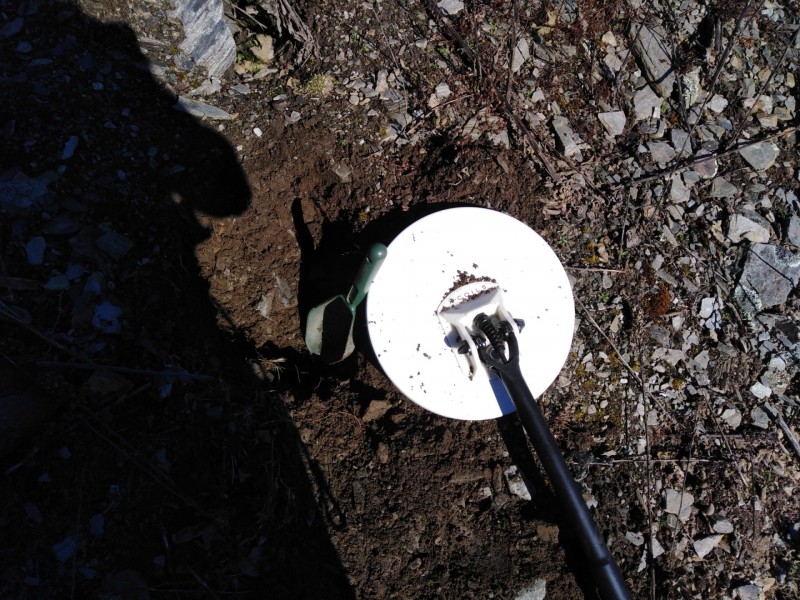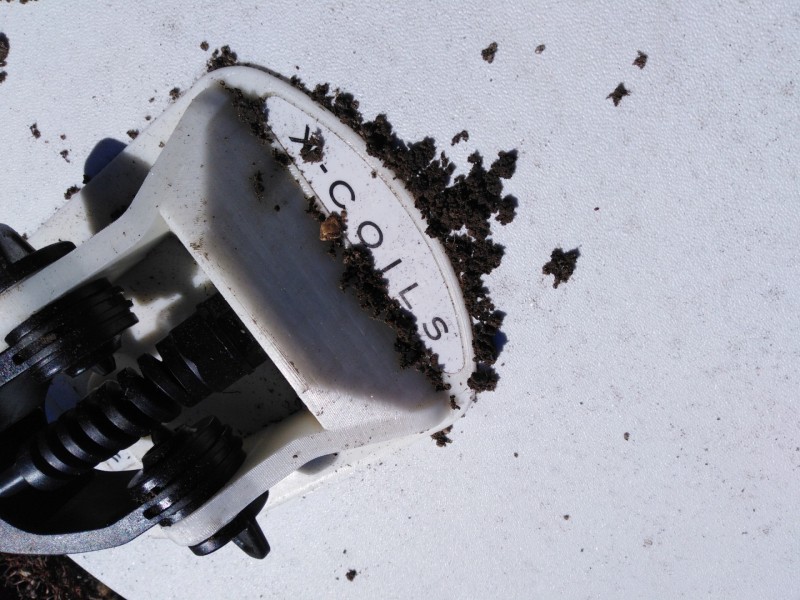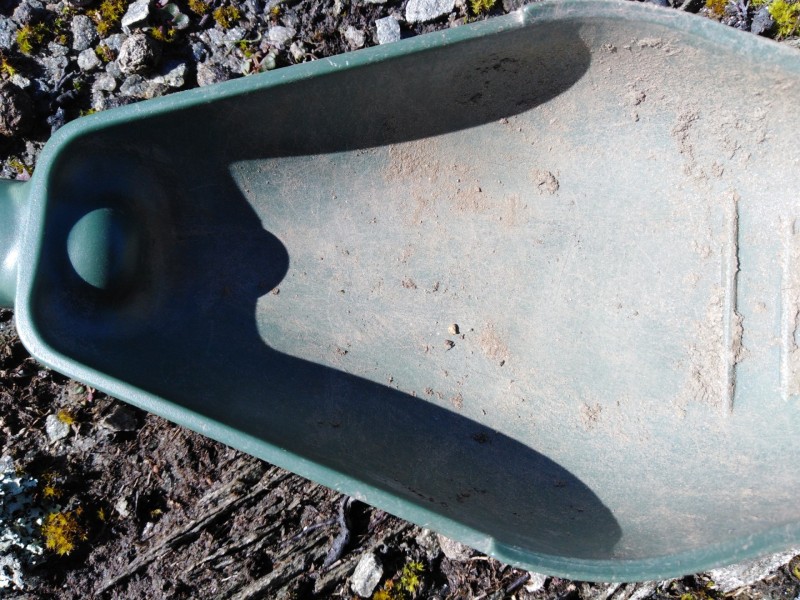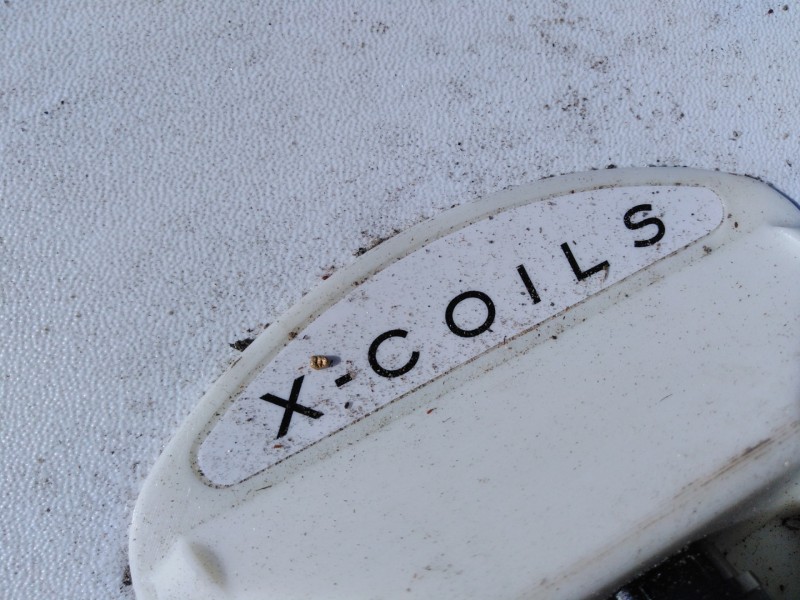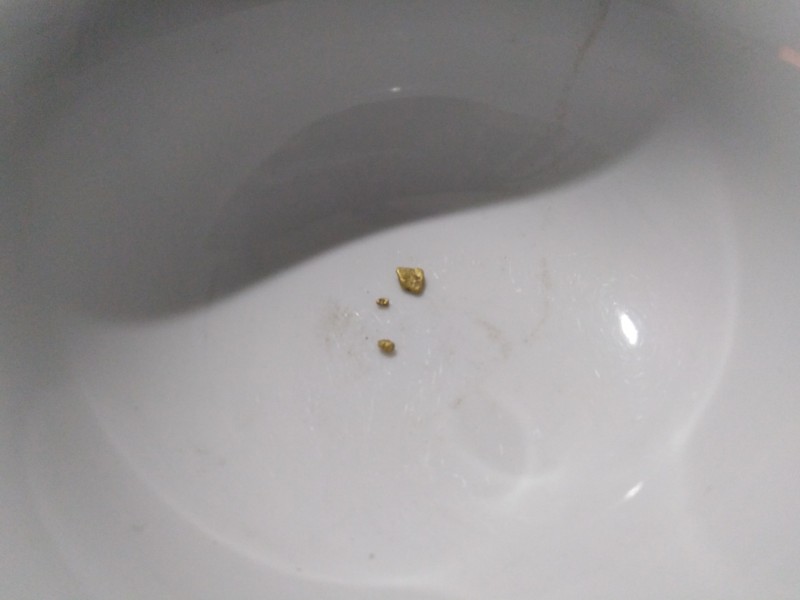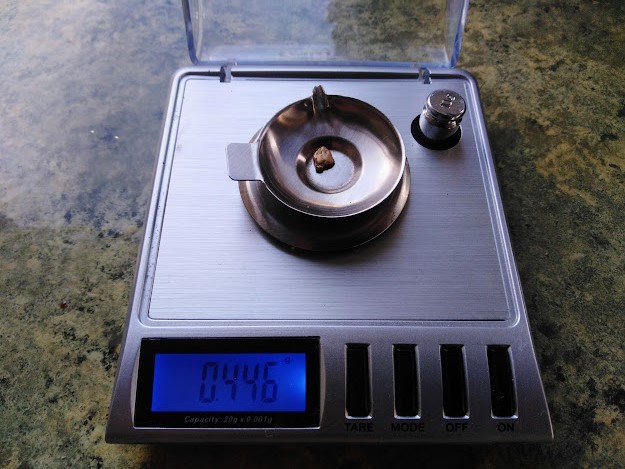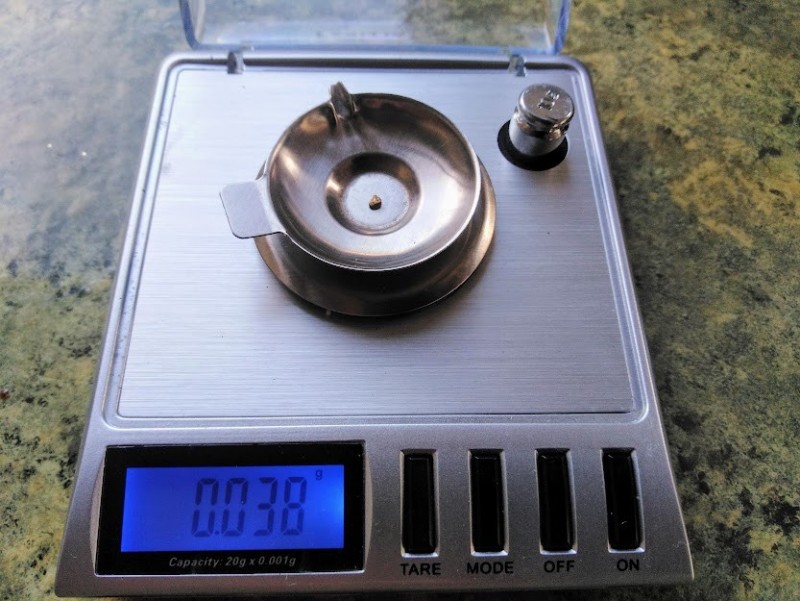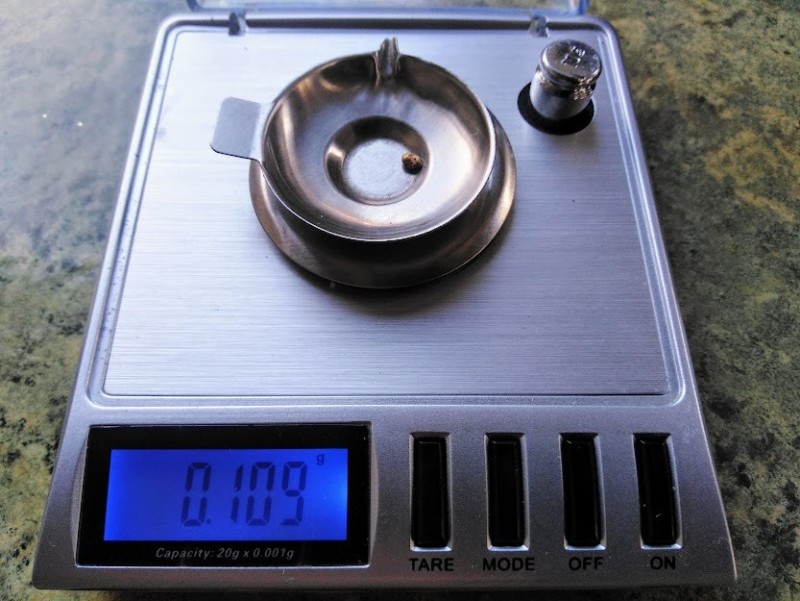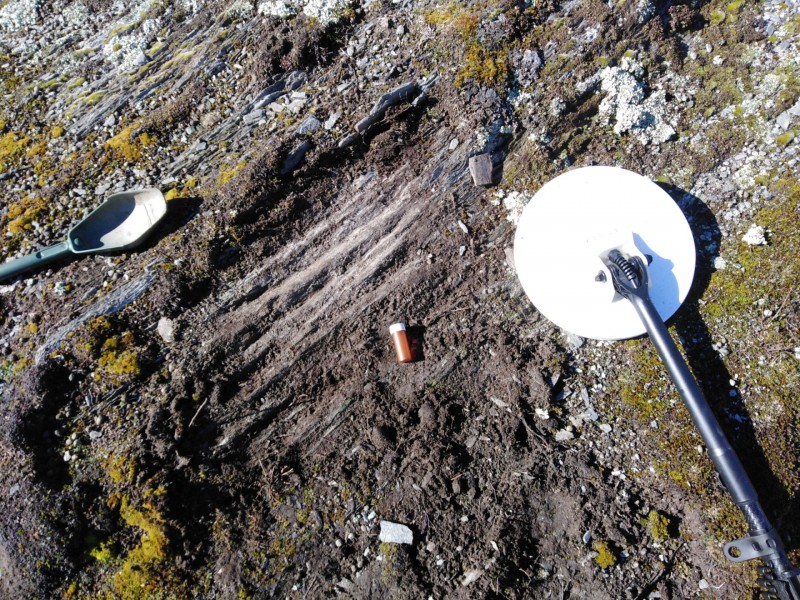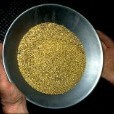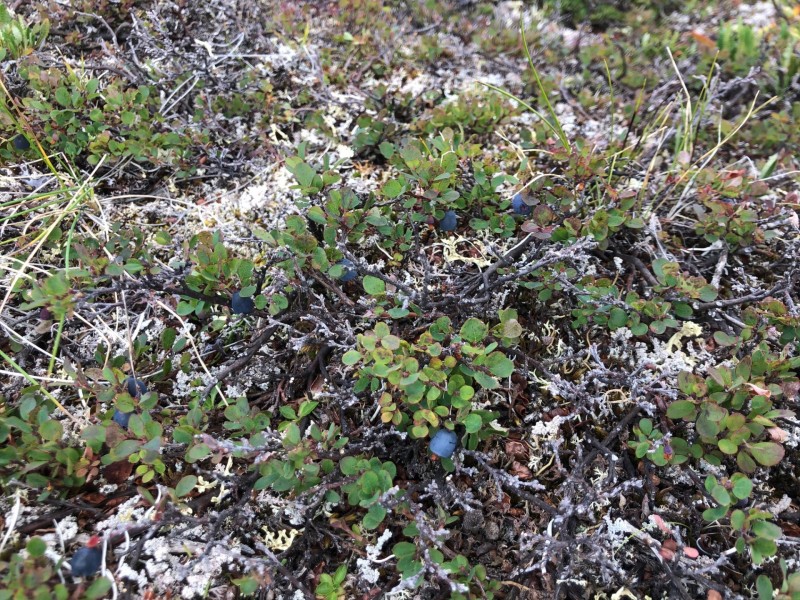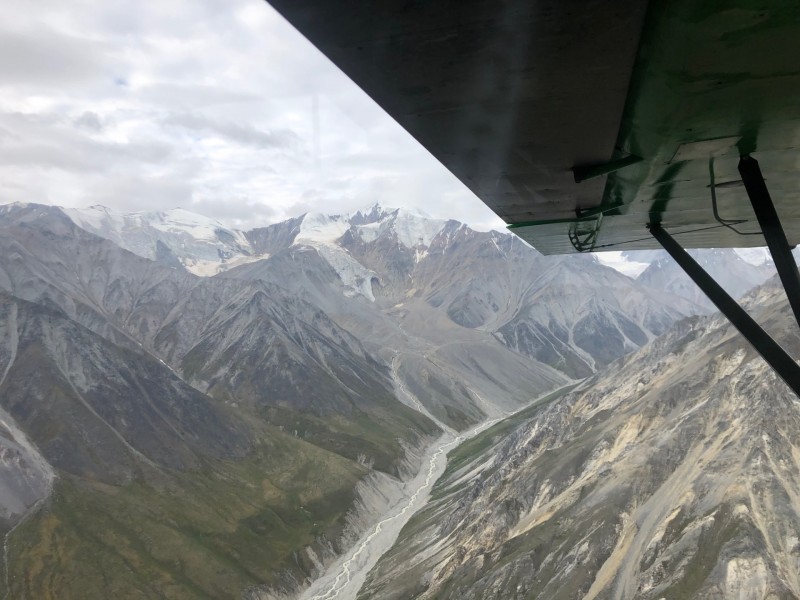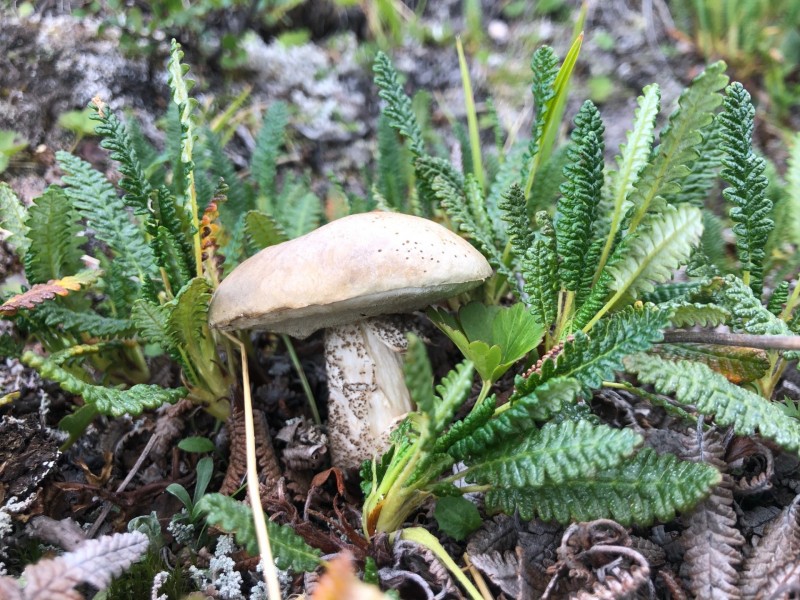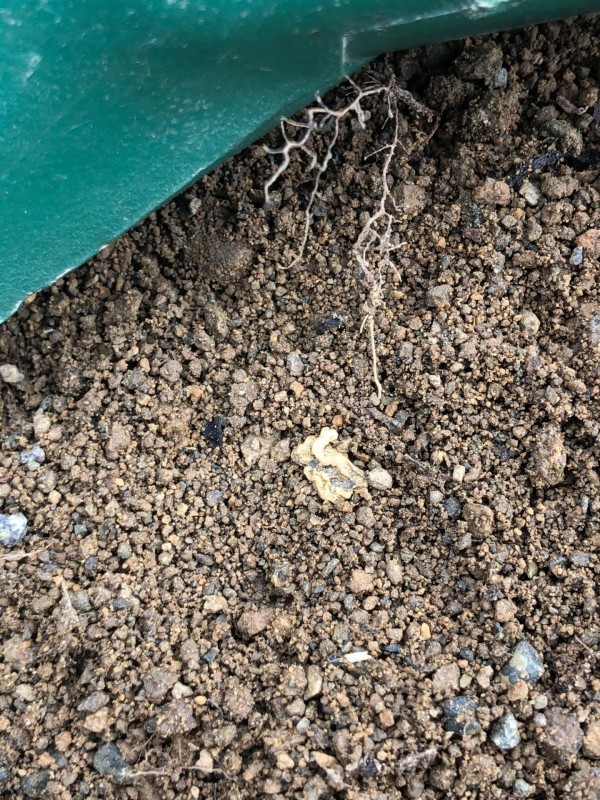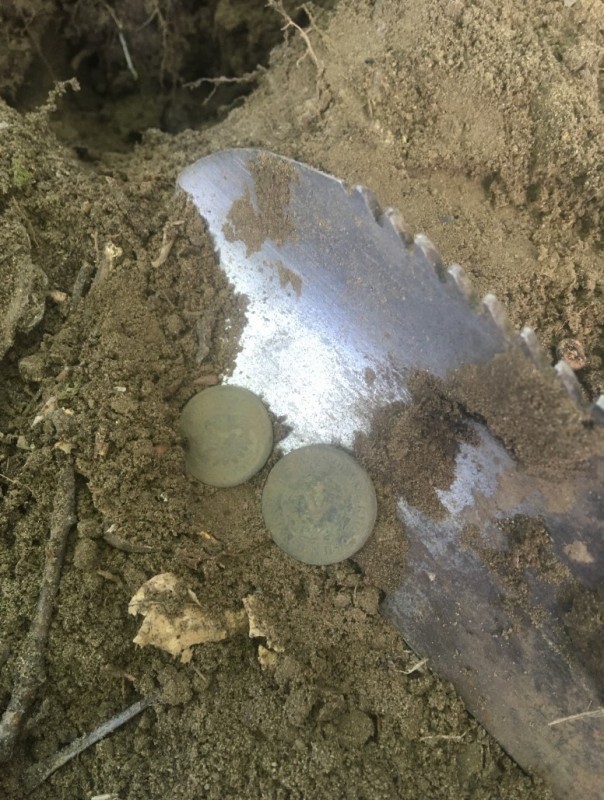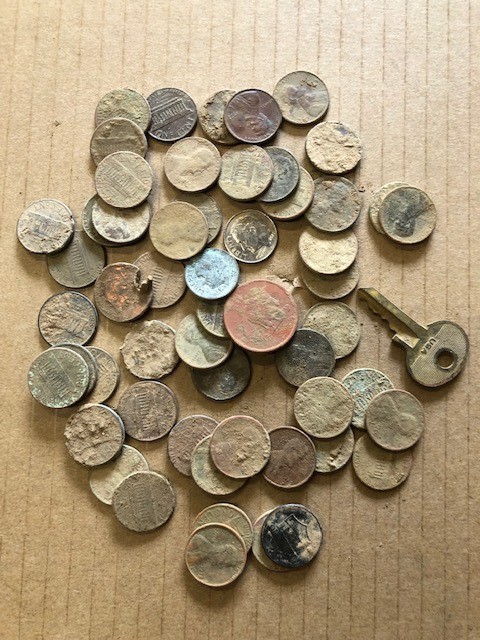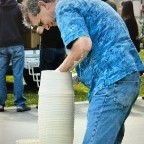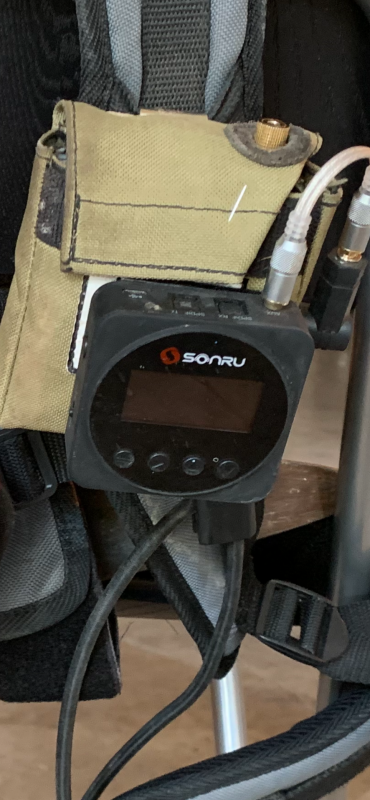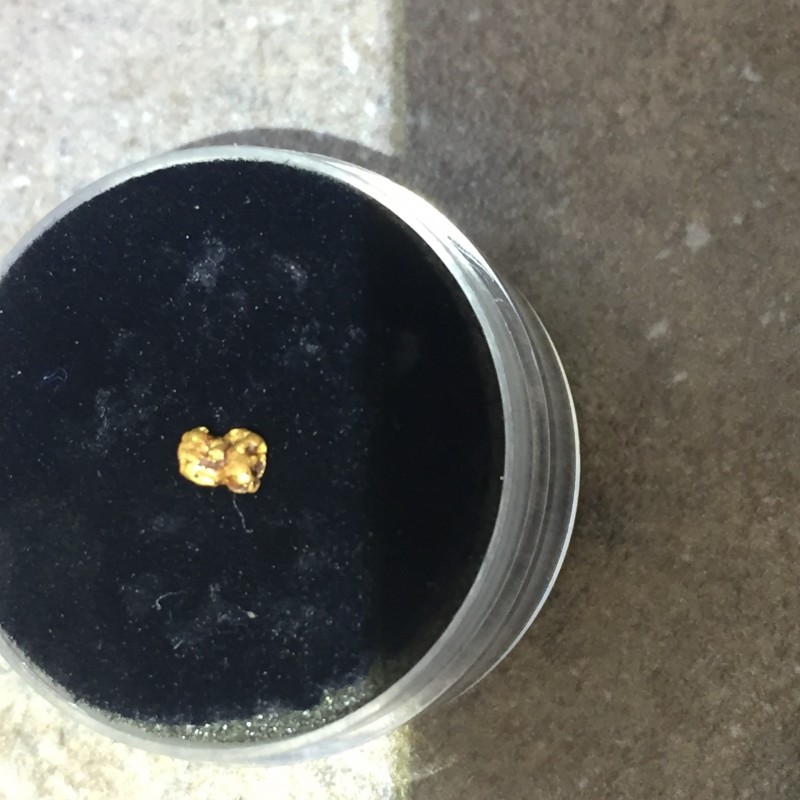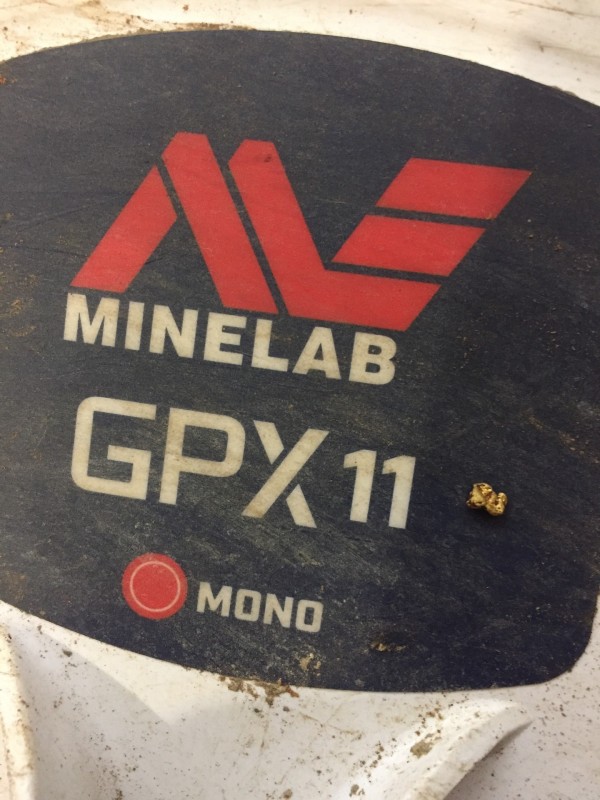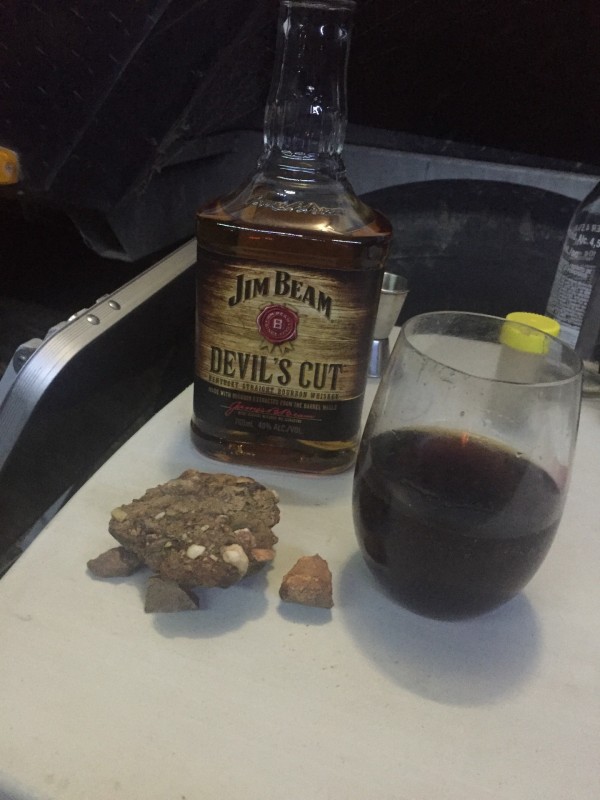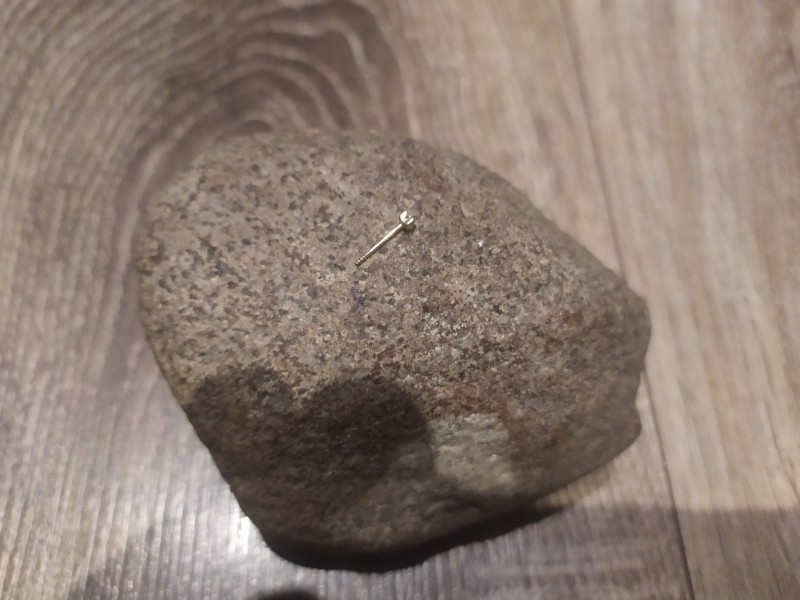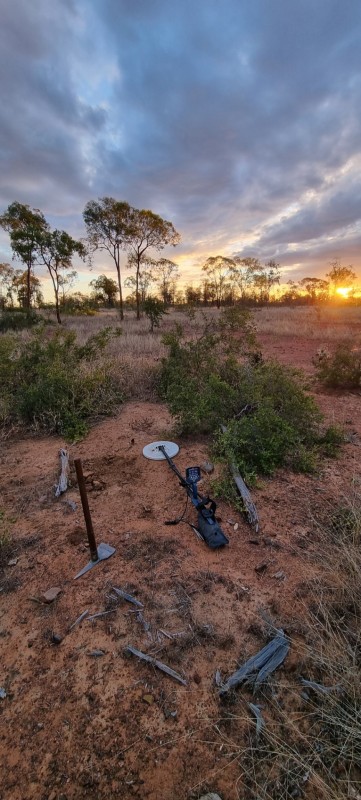Leaderboard
Popular Content
Showing content with the highest reputation on 08/17/2021 in all areas
-
Is that title click bait or what! LOL After 4 years of talking about it, Gerry finally comes to South Dakota! Yes I am "Brian" in Gerry's Part 1 post. It all started in 2018, at that time, I had been detecting for 4-5 years learning on my own along with a one-day lesson from Gary Drayton (before Oak Island) during my first year. I was well versed in book smarts and had done a bunch of research but never received formal instruction on gold detecting. See I was spoiled, my first nugget ever detecting was a ¼ ozT beauty on the first day and I thought they all were all going come like that. Nope LOL. I decided that it was time for formal instruction on metal detecting and had reached out to Gerry at Gerry’s Metal Detectors and signed up for one of his 3-day courses. Gerry’s lessons, along with his quality fellow instructors was priceless! It was during those lessons Gerry asked where everyone was from. When it came to me, I said South Dakota. I remember very vividly him saying. “Brian doesn’t know it yet, but he is going to invite me to SD because I have yet to detect gold there.” Or something like that. We all laughed but that stuck with me. A year later I called and said let’s put that trip on hold for a year as I was getting married and had a lot going on. The next year we had planned very tentatively, but Covid hit. Finally, after 4 years, the trip was established. Now, the hard part was to figure out where to put Gerry on some gold. I mean I had a hard enough time putting myself on the gold and this would be the first time I have ever invited someone to come detect. I was a little nervous that Gerry would come out on over a 2 day - 1000+ mile drive, 5-day trip and not find a thing! We all know gold is never a guarantee but, c’mon this is the first time I have ever invited someone to come out and detect and I wanted to impress somewhat. 😊 When it got closer he said that he was hopeful to have a 6k with him, and when it was a couple weeks out, we knew we would have at least one. My friend “Dan” was on the early list and Gerry would bring his out – hand delivered. Not until about Gerry being 6 hours away did he spill the beans and said he had one for me too. I was on a later list and just before he was about to leave, a shipment arrived. He knew that I would want this, even though I was acting like a doubting Thomas. I needed to put my fingers in the nail holes of Jesus’s hands to believe. I needed to see the Zed up against the 6k. Sure enough I did. Gerry explained it all in his post. 11 nuggets left behind in the first patch. Then I got to hold it and wow, Idaho Peg explains that really well in her post too LOL. It was being set free. Now like Gerry said, the ground on that patch was very saturated, wet down almost a foot. That patch is never like that, it was so humid it felt like being in FL. Very uncharacteristic. Power lines 250’ away. And he still pulled out 11 nuggets. I grided that patch 3 times with the Zed using 3 different settings for the ground I was on, ranging from a high sensitivity setting to a smoother threshold setting to a deep target setting. I was confident that that patch was worked out. Gerry uses a 6k and gets out 11 more nuggets. We ran the Zed over quite a few of Gerry’s targets with different settings and nothing. It would not have stopped me and obviously it didn’t. Would it have stopped me using the 6k, you bet. Very clear signal even through the SDC like threshold. That patch also had an SDC2300, Equinox 800 with 10 x 5 coil and a Gold Bug 2 ran over it as well, still 11 nuggets left behind. To me, seeing the GPX work in real life was what was needed for me to believe. It is hard to explain everything on a forum, but having Gerry stay with us for 5 days was in itself a 5 day personal lesson. We were able to talk freely, bounce ideas, theories, scenarios, ground conditions, you name it! It was so much fun, so informing and the most important we had a ton ‘o’ fun. I won’t tell you how my wife and I spoiled Gerry on this trip (let’s just say no one went hungry LOL), but we tried to give him the best South Dakota hospitality that we could. I wanted this to be a trip to remember and hopefully something that he would want to come back to. We took Gerry to 4 different spots overall and we had a success rate of 75% gold found. On the last day that we went detecting, I made the plunge and opted for the 6k. We went to a “new” area that that the SDC and the Gold Bug found a piece each in only 2 hrs of a recon detecting trip. By the end of a 5-hour session we had a new patch, “The Six Patch.” I added 3 more pieces as seen in Gerry’s post. Gerry I just want to say that we had a blast! It was so much fun, extremely entertaining 😉, and an overall great time! We forgot to take a group pic so you are definitely gonna need to come back! Now the rest of the story…….. So Day One on the 6k and I find gold. I am now so excited to start going over old patches and see what we missed. Well I can honestly say this--I have found gold every day I have used the 6k since owning it. Now granted it is only 6 outings, but that is 5-6 weeks of detecting for me. I have a job, I can only go out detecting on weekends and usually it is just one day on the weekend. So if I get skunked at least 4 times in a row that is a month of no gold and months are limited up here. So not only do we need to do massive amounts of research, you also better be using the best equipment you can as well and you better know how to use it properly. My Dad always told me “The poor man pays twice.” You can interpret that how you would like, but to me if you don’t get the best you’re going to end up paying for it in the end anyways (repairs, upgrades, etc.). So for me, when the 6k came out, I had to know I was making the right decision. Two reasons: 1.) I have a Zed, it is still considered the flagship detector, do I NEED a 6k or can my Zed do the job. 2.) If I want a 6k, the Zed had to go, because of my financial positioning, I must sell in order to “upgrade.” So I researched, read all I could and watched. For me though in the end, I really had to see it in person, I had to touch it, I had to use it. I mean if it was as mind blowing as the Zed was when it came out, I think it would have been a no brainer. In my research one of the things that really stood out to me was the star chart, believe it or not. Doc kind of opened my eyes to it analytically and with a combination of Nugget Heads statistics videos and seeing it in person replicating the same analytics, it was like a eureka moment. It finally made sense. See everything that Steve and JP told us about the detector was accurate, right on the money. I believed them, but doubted them as well for some reason, I needed to somehow verify this for myself. It is just my personality and I also learned some personal lessons along the way and also apologies had to be made. In the end the 6k is by far the best detector for me, it made sense to me, it works the way I want it too and it finds the gold just like it says it does. So onto Day 2 with the 6k, I go back to the patch Gerry covered, Memorial Day Patch. I grid it nice and slow, he was nice enough to leave 3 behind for me 😊. One of them was a nice 0.5g piece but I blame “Dan” and Gerry for leaving me this one. It was by a rake “Dan” had used for his Gold Bug. Nobody moved it LOL. It was hiding that nice nugget but go figure the other detectors did not hear that before the rake was there. I can’t explain it other than the 6k heard it and the others did not (matches the star chart BTW). None of the targets were super deep, about 4-5 inches. Day 3 with the 6k, I go back to Stank Patch. It was overgrown so this one will need much better covering in the fall or early spring, but in 3 hours I pulled out two pieces that I missed that again had an SDC2300, Gold Bug 2 and a Zed over. Depth on those two were at 6.” Day 4 with the 6k, I go to the E Patch. Lots of garbage at this patch so I go to the top and BOOM, hit 7 pieces to 3 pieces of garbage. This was one of our first patches. It has been hit a lot with again the SDC2300, GB2 and the GPZ. That was a fun 4 hours. Day 5 with the 6k, I go back to the E Patch. I continue down and again another 7-piece day, more garbage this time and the garbage that I am picking up are flakes of rust 12” down. 14 pieces now, it just tripled the amount of nuggets on this patch. I will let “Dan” fill in his story here LOL. Day 6 with the 6k, I go back again to the E Patch. Working a little further down found two more pieces in less than 3 hours with my wife. I love when we go together, it is such a…..joy. Just kidding. She likes to do some of the work but if you remember that video of the kid I posted a while back. Yeah it is kind of like that LOL. So here are my thoughts on the 6k: Overall I absolutely love this machine. We all know how awesome the ergonomics are. One arm, no harness, detect all day. Matter of fact I have had to relearn coil control all over again because of this being so light. I was swinging way to fast! LOL. At first I was racing all over the place, the Zed was so heavy and cumbersome that it MADE you go slow, not with the 6k. Most of the time I was running Auto+ in Normal with Threshold on. I would test my targets in Difficult and also had no problem hearing them. Only once did Normal give a signal that Difficult did not hear and it was a rust flake about a foot deep. Like Gerry noted, if you hear a signal in Normal and switch over to Difficult and there is nothing there, switch back to Normal and that signal tends to breakdown and disappear. We found this to usually be ground noise or iron rich ground pockets. I would always give these a boot scrape and double check. As of now, I play the odds. If the signal is still there when switching back to normal, I dig. If not, I move on. The cam locks I think are a huge upgrade compared to what we used to see, they have been remodeled and I crank down on them extremely hard. It is pretty hard to break carbon fiber. The shaft might flex but it does not wobble, I only notice the flex if you swing the thing like a golf club. Regarding EMI, it is there sometimes, but I “grew up” with the SDC2300 and to me the threshold/EMI is smoother. We were even detecting by power lines and when you got to about 250’ from them you had to stop. Haven’t tried the DD coil yet. Matter of fact the EMI saved me from a massive thunderstorm that hit just as I got back to the truck LOL. I only run the external speaker and usually at 1 or 2 so that might help and I also extend my coil to the max (just the way I like it), so that might help too. I did notice that if I have my phone on and sometimes my Garmin inReach that I would get some EMI, so I just turned them off completely and did not have problems after. Breaks in the threshold are very clear so you just need to “listen through” the chatter, but like I said I learned this a long time ago with the SDC. In regards to depth, I have found 0.03 g pieces with a max depth of 4 inches, a flake of rust at 12 inches. Overall the average of the pieces are 0.15 g at an overall average depth of 7 inches. I have not found a 2-foot-deep nugget yet, but never have with my Zed either. Most of all of my multi-gram nuggets were found between 6-8 inches so I have no concern about the 6k not picking them up and since I believe in the analytics of the star chart I am confident that the 6k will pick up the big deep nuggets 4 out of 5 times vs the Zed. I have no problem in that trade off vs everything else that the 6k offers. But for me here is the best thing, instant out the door detecting. Charge one battery the night before, grab your detector, pick, scoop and finds bottle and away you go. Less than 15 minutes and I am out the door. Before I had to grab a harness, grab a WM12, obviously grab the heavy detector, make sure both of them are charged, grab a bungy, make sure I have all the parts to the harness, grab a ferrite, etc. Then when I got there, I had to gear all up, no more. Out of the truck and detecting in minutes. Oh, and for the long hikes in, this is awesome as well, beats the SDC at this as well. With a small Camelbak on my back, I have my lunch and water, scoop and finds bottle. Put the pick in one hand and I collapse the detector shaft down all the way, turn the coil vertical and hold on to the detector like you are detecting. It just becomes a part of your arm then and makes hiking in way easier than carrying it the old-fashioned way. Matter of fact it is kind of off balance if you carry it the old-fashioned way. Now I do have a couple cons as with any detector: The main one being where the coil attaches to the unit, it is plastic, that seems like an easy breaking point to me. Gerry said they always used to be metal. So do take care not to grab there when grabbing the shaft at that spot. Also, it is so sensitive that it goes off really easy now on my wife’s metal hip. She used to like helping me, especially the scoop part. She can’t get close to the coil now like most of us normally would, so just keep that in mind if you have metal parts in your body. Yeah, the stupid rubber door for the headphones sucks and comes open easily if you rub on it, but thankfully, Steve showed us how we can “fix” that easy and cheap. The last con is one that I cannot really put experience on because I never had a GPX previously, but it lacks the Iron Discriminate that all the old GPX, GP and SD machines had. Talking with Gerry I can see how this would come in handy as just another tool in the box. I am crossing my fingers that it could be added as a software/firmware upgrade. I mean they are already halfway there with the Double D coil and it sure would make the coil more “useable” at least for a couple of my situations. Well there it is for me. I am completely at peace dropping the Zed for the 6k. Keep in mind though, as we always talk about, this is for my conditions, my soil and my type of gold detecting. Everyone has their own conditions, ground and style and needs to make their own decisions and be comfortable with them. Seek advice, ask questions, do your own research, come to your own conclusions. Most importantly get out there and enjoy metal detecting and finding gold. The 6k taken that for me to the next level.24 points
-
Thanks for the intro, GB_A. I'm a little late to this thread, so all I can do is add my voice to the already resounding chorus of “NO!” I found out long ago that detecting for gold is feast or famine...not a consistent income...which makes it incompatible with consistently recurring bills. So, as has already been noted, if you live in a tent or vehicle in the goldfields, are alone and without any bills to pay, and are a very proficient and experienced detector prospector, then you could eke out a living, but not consistently. I've done it, but it is only temporary; sooner or later the gold simply runs out. Add to that the fact that having to find gold to make a living really takes the fun out of detecting and turns it into just another job, and you can see why it's better to do it as a hobby for the sheer enjoyment of detecting gold nuggets.17 points
-
EMI/Sferics are depth killers, this is why the GPX5000 came with the Stabilizer setting set on half way, however the GPZ7000 is far better for Sferic noise than the previous GPX machines but can suffer from it nevertheless. Salt is also a depth killer, in a lot of ways it is far worse than EMI due to swing speed having such a variable interaction with the noise generated (from micro variation to excessively loud depending on the location and speed of the coil). 400 mm is not that deep relative to what both these machines can achieve, I’ve dug stuff not much bigger than a gram at similar depths in the right locations, so I would say there was a combination of Salt and EMI present at the test site. IMHO the Salt mode has better outright depth compared to Cancel assuming EMI is minimal (Cancel is the default setting when a DD coil is attached to the GPX6000) , Salt mode does have some noise cancelling characteristics so if the EMI/Sferics is not too bad then I will use that first before going to Cancel mode. There is a good reason for having a 14” coil size as the default DD coil with the GPX6000, essentially the Rx of GPX14DD it is a 7” Monoloop so the sensitivity to surface targets is off the charts but also the 14” overall size brings up the depth which is compromised when using a Cancel or Salt Tx/Rx format compared to a traditional DD receive or compared to to using a dedicated monoloop coil. When using the DD, small targets are most sensitive on the left hand edge of the coil with some sensitivity in the centre like a traditional DD, for deep targets the whole left winding is alive with the bulk of the deep signal coming from the centre. It helps with visualisation to think of slower broad deep target noises coming from the centre of the coil. JP9 points
-
DD coils back in the day were the go to coils on early Minelab SD and GP PI detectors, and it was not until the GPX series that a switch was made more towards mono coils, as the GPX design tended to favor those coils. However, DD coils do have inherent ground canceling abilities that mono coils lack, and in the case of the GPX 6000 extra EMI canceling properties (or salt, depending on the setting). Your guess as to what produced the result is as good as any, and shows how preconceptions based on simple tests can run afoul of reality. People have generally been writing the DD coil off as a no go due to simple depth comparisons in ground where the DD coil has no advantage. But in this case it shows that the GPX 6000 DD coil does have a place, and can produce good results. Areas with high mineralization, salt, and EMI, alone or in combination, may benefit from use of the DD coil. It's not that the DD coil goes deeper, it is that it loses less depth than other coils in certain adverse conditions. It's being included as the option in the U.S. and Oz for that very reason.9 points
-
Is it $100 per hunted out site? Can you put me down for three please... strick5 points
-
I've seen my understanding of the scrape and detect method in play many times with JW, he finds a nugget, then spends a few hours scraping away getting more and more, he had a turn on a patch I found and did exactly that as he didn't want to start taking over my patch he stayed in one spot and just kept scraping down layers and getting more and more gold, albeit very fine gold so he was using the GM1000 but the gold just kept coming and he was having a good time, I'm sure he got 60 or more pieces from this very small area. It was quite impressive to see. I did similar on my first ever patch, it was in the bottom of a old timer dug out sluiced area and I found one reasonably sized nugget, so I just figured there had to be more so I kept digging out the area and more and more popped up, it eventuated with me getting my biggest ever nugget which was 4.2 grams, very respectable size for NZ. I went back the next day with a shovel instead of a pick and I probably got around 20 to 30 nuggets in an area that on the surface only had one detectable nugget. In saying all of that I probably need to use this method more often as I've only done it a couple of times, perhaps I'm a slow learner 🙂5 points
-
Maxxkatt, I completely understand your thought process on going full time detecting for gold. I am doing this myself. To do this, you need to reduce your bills first and foremost, my wife kicked me out and divorced me, so now I live in a tent. So I have that covered. No rent or morgage. I have a plan for monetary sustainability, being first the gold I find, second income from my book sales, as I write on gold detecting. Next I will have income from writing articles on gold detecting. I will be talking about my book and gold detecting at club outings-more book sales. I have a YouTube channel called - Gold Seeker Adventures- which I will be putting out 2 videos a week, nurturing it until it starts bearing fruit. In addition to this channel I will be doing a series of videos that will not be on YouTube but instead will be on Udemy.com, which will be a paid online training course people can take. I have been detecting, prospecting for gold since 1980 and I have alot to teach on it, same as Steve, Chris, JP and others on here. Next will be a product line on my website other than just my book. Alot of my gold will be turned into basic nugget jewelry to sell to all those impulse driven women out there at various craft shows and gold shows. This is all taking place this month hopefully, maybe next month. Now as far as detecting and utilizing my time to the best in camp. Spending at least 8 hrs a day every day will be the norm, then camp chores and then sitting down in camp and editing and uploading videos, creating thumbnails, planning the creation of new videos, this all takes a plan of action and time to do. I will be working on my next book "Strategic Gold Detecting" each night. It will be a full time job. I can't drive truck anymore as a result of a work injury,in fact I can't go back to any type of work I've done in the past 15 years. Luckily I have an Associates Degree in Visual Communications to assist with the product line and YouTube channel. What Steve and Chris said about needing the knowledge to locate gold is spot on and even having the best of this knowledge won't guarantee that you will find a sustainable amount of gold every week or every month. I will be living out of a truck and maybe a cargo trailer if I'm fortunate enough and calling it good enough from here on out. This brings up another topic to consider, if you don't already spend alot of time living out of a truck or camping for many days or weeks at a time then there may be some disappointments ahead. I have regularly lived out of a truck and sometimes a tent for many months at a time for work and play, so I know that this type of living conditions is definitely my cup of tea. If you don't already have this means of living figured out and enjoy it, then hitting the road and hitting life's bumps alone this chosen course can break you, which is probably the point where your wife jumps ship and divorces you. I have already lost mine and I will never go down that road again, so living in the mountains and deserts alone detecting for gold and writing about my experiences, strategies and knowledge to find difficult well hidden gold is more attainable without someone nagging at me about how we are living. The key to doing this is having a side gig to bring in money. If you have a business that you can run completely from a computer and the money drops into your bank account without having to go to the bank too often then this is definitely obtainable but you still need the knowledge that Steve and Chris are talking about, and that doesn't come in a short time. Steve, Chris and myself as well as others on here know that this takes years to aquire. The idea of doing this sounds grand to the mind but anyone who choose to do this had better know what they are in for and the hardships they are going to face. Hope this helps you figure it out.5 points
-
Brian, You certainly were one of my harder sales but that's part of it. Not all people accept knowledge from a salesman as fact and since the GPX-6000 is still pretty early in it's release in the US, I realize there will be those who don't understand a $6000 detector being overall better than an $8000 model. It's the same with the Equinox 800 at $950 vs the CTX-3030 at $2500, it's just hard to see why the manufactures would do that. All I know in my 25 yrs around Minelab, their Engineering do not go backwards when it comes to their technology. I'm glad I was able to make you a believer. Sometimes the truth has to be earned in the field and you willing to take me to your patches is exactly what I knew would seal the deal. Hopefully when the new GPX-6500 with Iron Discrimination comes out, you won't need such hard face to face field teaching facts, although that might be a good reason to come back. As you know, my full time job is selling metal detectors. Part of what I enjoy most is the meeting of people, educating folks on detectors (that's why my staff and I offer 3 days training) and being able to adventure the country/countries with detectors and provide knowledge to folks in the field. At the same time, I get to learn new areas, ground and possibly find some gold or other treasures. The real gold in all of this though, is the fun with the friends and helping them become proficient with their detectors. My business plan is to be in the field which can then build long term relationships. When I'm in the Carolinas with customers like I was earlier this year and watching them dig their 1st Civil War Relic, or I'm in gold fields with folks and seeing the smile on their face as they score their 1st of many gold nuggets, that's part of what my staff and I enjoy most. We cherish seeing Success from those we helped and seeing their smiles. Your research and foot work has put you on some gold, your preferred detector dealer has proven the newer tools work to put more gold in your pouch. Your willingness to share you sites and get us the permissions on the property shows how golden you and your wife were to my stay. I sure hope she is able to join you more in the field and I most certainly will remember the great eats, stories and entertainment. Thanks for taking the time to give your input on the new GPX-6000 and sharing the pics of heard earned Success. One thing I noticed. I can remember you telling me a few times of your weekend hunts and not finding gold with the 7000. No worries, I do that quite a bit. But you made a comment in your post I found very interesting (if I read it correctly). You have not been skunked yet on your trips with the GPX-6000? Now that really does say something about this detectors capabilities. Thanks again for the opportunity to allow me to spend time with your family, Dan and gold sites. Memories forever.4 points
-
Haven't been getting out as much as I'd like to, but did a recent business trip and incorporated a favorite back pocket spot into the loop. Between the heatwave and the overgrowth, it's best visited in the winter or early spring, but I managed a few keepers. Very short video: GL&HH, Cal3 points
-
afreakofnature, This is a great writeup on the GPX6000 and it’s capabilities in a variety of conditions and it’s performance against the previous top dog detectors. I have not tried the tip on going from normal to difficult and back to normal, thanks for sharing and I look forward to trying this out as I have had some false signals in hot ground. Best wishes on your next hunt. Ron3 points
-
When i used to work in Papua New Guinea the local saying was "expect the unexpected" which i think applies to metal detecting - you continue to learn and be surprised. Yesterday three of us decided to test the GPX6000 with 11 inch mono, 14 inch DD and 17 inch mono and GPZ7000 with 14 inch stock coil at a local test site that has targets in situ for a number of years. We were particularly interested in the deepest target that was buried at 400mm (about 16 inches) representing a large deep nugget. The 7000 could not detect it in difficult setting only in normal setting - i was told by the owner of the 7000 that normal is not his preferred setting. The 6000 could not detect this deep target with the 11 inch and even the 17 inch (we tried all settings) - but get this - the 14 inch DD with EMI cancel on could hear it as good as (if not better) than the 7000 in normal mode . We were not expecting this result. We though about this for a moment and the only conclusion we could come to was that the high environmental EMI was affecting the performance of the other coils & favoured the DD coil. Any other thoughts as to why we had this result?3 points
-
Another consideration to make a living gold mining would be to work for an existing gold mine operation currently in production. With the price of gold being what it is, there's plenty of opportunity out there. I know of a kid right out of high school who's working for a small "mom n' pop" placer mining operation and gets paid a percentage of the take plus board. He is compensated very well (beyond the contract amount) as he's a hard worker and they want him to stay.3 points
-
Hey there Tom Slick : For a mere $100, I can be persuaded to tell you Brian's seated-coin & button bonanza backpocket site here. But don't worry: I've got the extortion racket going both ways: Because Brian must pay me $200 in order for me to keep Quiet. Good racket I got going, eh ? 😘 Oh, and If Brian tries to come on here saying that I pronounced the site "worked out" long ago, don't listen to him. He's having another psychotic delusion. We try to keep him on his med's but ..... sometimes he slips 👍3 points
-
Saw this on another forum: http://www.treasurenet.com/forums/treasure-related-stuff-sale/657374-tesoro-parts.html Been trying to snag a few spares for my machine and figured you guys might be interested.2 points
-
My 1st in the field trip review of the new GPX-6000 and what I experienced. The info of my learning, field observation, side by side comparisons, thoughts and comments are in no means the final verdict of the GPX-6000. The reason I say this, is the way my staff/I 1st started training customers on the GPZ-7000 is not how we train them today. Things could change, software downloads might come and as we spend more time in the different gold fields our knowledge goes up. I had the opportunity to hit the hills and that’s exactly what I did as I jumped into the truck and took off 1000 mile drive (one way) for some new gold fields. These were not just any gold fields but of locations and states I have never hunted Au nuggets before. I was able to spend 5 days in lush green forests in Black Hills of Dakotas and also the high rolling exposed bedrock grizzly bear country near 8000’ elevation in WY. Both of these states are on my check list of “Needs to find a Nugget” states, as I am a man who enjoys the phrase “been there – done that”. I don’t think it makes me a better nugget hunter, but I do feel it makes me more rounded and educated as a knowledgeable Gold Detector Dealer. Day one was a soaking wet ground day and I was sure the capabilities of the GPX-6000 were going to be diminished as it had rained all night long. The nearby creeks were chocolate brown in color and swiftly running to their edges, which is pretty rare the end of July. Either way, I was going to do it as I’d already drove 1000 miles, the schedule was already made and I had 2 other Dakota prospectors eager to chase Black Hills Gold with their detectors. For this story, I’ll make up names as I don’t want to expose their identities and or ruin the permissions on the lands we were granted. Common names are great for such times like this so I’ll use the names Dan & Brian. Dan was stepping up his game from a proven VLF, the Gold Bug-2.. but we all know it’s limited depth, inadequate capabilities in mineralized soils and liking of hock rocks, to a new shiny Pulse Induction GPX-6000 (yes I personally delivered all the way from Idaho). When we arrived at the site and I was shown the actual patch (quite small in size maybe 20’ x 10’), I was impressed at the location and amount of moist green vegetation around us. The surrounding mountains and area was quite different than what my mind expected and the movie series (Deadwood) I watched. The actual patch had been cleared though and we were down almost bare ground but some areas had about an inch of grass root systems. Funny how a couple pieces were actually in the roots. Dan certainly was the eager one as he scored 1st gold of us 3 and in fact, I was still trying to understand my new 6000 when I heard him holler “gold”. It was nothing big, but it was his first gold in his first 15 minutes with his first PI, a new GPX-6000. Not long after, I had my first signal and when I called Brian over with his GPZ-7000 he could not hear it. Interestingly the first 2 targets I called him over, his 7 missed though they were not gold, but actually small lead bird shots. Then my 3rd & 4th signals were small gold and still this GPZ was silent. Now we are starting to see a pattern. Another Dan nugget.- In the back ground I hear Dan yip yip like a little kid and I thought, oh my they do have 1 ounce nuggets in the Black Hills, but quickly see, not the case. It was very impressive though and weighed over a gram, which was actually his biggest gold nugget in his young Au chasing career with a detector. How his face was shining, I could see he was totally on board with his new high end PI detector, which made me feel good. Finally Brian hollers gold and I could see a nice picker of .2 gram from distance. No, it was not the area I was swinging as he wanted me to be on the exact spot of his so called cleaned out patch, so I did not get to see if the 6000 could have heard, but I’m most certain it would have. The one thing about having 2 GPX-6000’s and 1 GPZ-7000 in a 60’ area and a power line running no more and 150’ from us, it did leave the GPX-6000 needing the Noise Cancel about every 10 minutes. Once I realized this and how fast the “NC” is complete (approx 5 seconds), I had no more issues. Yes the GPX-6000 needs to have the Noise Cancel done more often then I did with my GPZ-7000, that does not make it a bad detector, it’s just the best way to handle EMI. Back to the cleaned out GPZ-7000 patch Brian put me on. So far the targets I have been finding, the signal responses are all pretty clear/loud and I was impressed how easy the 6000 was indeed outperforming the 7000 in wet saturated soil with the detector settings running NORMAL GROUND, THRESHOLD ON, and SENS at 4 – 7. After a couple more nuggets his 7000 missed, I decide to go back over the patch, but this time I adjust the settings on my GPX6000 and adjust the SENS to 10 ( Not Auto +1 ,but actual 10, which is MAX). I am not recommending newer users of this detector to go there right away, as my ears have been listening for gold targets in mineralized soils with a Minelab PI for 25+ yrs and I usually can pick out odd sounds and patterns quite easily when compared to most newer hunters. Yes the detector is much harder to understand and more noise coming from it, but a trained ear helps. With the new HOT settings and me going back over the same 20 foot square, I get a really weak iffy signal that repeats half the time. I call Brian over and his 7 does hear something, but it’s just about the same and he says he would not have stopped. Well the one thing I know is when I get in a patch, I don’t leave any odd noise undisturbed. 2” later off the top and I am most certain to dig a nugget. Another 4” deeper (now I have removed 6”) and the 7000 is still having issues, but the 6000 is easily singing the Au tune. 2 more inches deeper (total of 8” depth) and I have the little solid .3 gram nugget out of the hole, most impressive. IMPORTANT OBSERVATION - One thing I noticed when I swung the 6000 outside of the patch area and into deeper wet soils at this site. The GPX would hear saturated reddish soil pockets and the narrow pocket ones did sound like a really soft deep target. I dug a few down 4 to 6” only to have the signal disappear. After doing this a few times and even on the actual patch I was fooled, I decided to test the assumed target spot in the “DIFFICULT” Soil Timing before I dig. Wow, what a difference that made. Each time there was a target, the DIFFICULT would still hear it but when it was just ground noise, the DIFFICULT timing cleared the assumed target and response was gone. I would love to hear others observations on this as I am sure there has to be a breaking point? The afternoon ended with my GPX-6000 TRUMPing the 7000 as I scored 11 nuggets in about a 20’ area of the old 7 patch. Brian did score a few on the outskirts with his 7 and Dan also dug a couple more. The 3 detector total was around 17 Black Hills Gold Nuggets, 1 happy customer Dan and a stunned Brian with a heavy GPZ-7000. The moral of the story, Brian is now swinging a GPX-6000 and finding more Dakotas gold pickers. Dan is in heaven as at one time he was trying to justify a GPZ-7000. I accomplished part of my goal, to prove the GPX-6000 will get most folks in the US more gold in their pockets with a better user friendly, lighter and less exhausting detector. And… I was able to check off the gold nugget recovery for Dakota “been there, done that”. Later on in the trip and after Brian witnessed the extra gold I was getting from his patch with my GPX-6000, he decided one needed to be in his hands. He also realized the majority of gold nuggets the people in the USA find are smaller gold of less than a half ounce, so the GPX-6000 will do him just fine. Would you believe me if I said, I just so happened to have another new GPX-6000 with me…SOLD. Just to give him some love, we did detect another site and he was the bread winner that day scoring 3 nuggets to my ZERO. I was busy stuffing my cheeks with nice sweet wild raspberries, they were everywhere at that site. Part #2 to come when I get more time…hopefully worth the read.2 points
-
In other words, you're a scientist. No reason to be apologetic there, IMO. Nice writeup, written like..., a scientist would.2 points
-
For me the Equinox w/ 11" coil starts feeling heavy after 3 hours hunting. I wish it had a light 8" round coil.2 points
-
Wow, it's a small world. I once had a (not so serious) hypothesis that my brain only had room for about 200 faces and once I filled it up, every new person I met looked like one of the 200. Another datapoint in the confirmation category now since that 'Brian' (not his real name 😕) guy sure looks like someone I met at one of your (Gerry, Lunk, and friends) field training classes. And, what a coincidence, his name was 'Brian'! In fact, another rare coincidence, he looks like a poster here, and that guy is from South Dakota. Another nice writeup, Gerry. My only criticism (call it a jab/needle) is that I don't feel too sorry for you having to drive 1000 miles for gold. I drove twice that far to take your class (and, full disclosure, it was worth it).2 points
-
The weights that I am about to quote here are actual weights weighed by me on my scales and are not taken from published specs. My Deus with the original shaft system (partially aluminum), 9" HF coil, coil cover WS4 module and not the bigger remote attached (since I just use the WS4 module) weighs 940 grams. My Equinox 800 with Detect Ed shaft system, Doc's armrest cover, 11" coil and coil cover weights 1245 grams. My experience is probably different from others. I find the Equinox 800 with this setup to be fairly easy to swing for 6 to 8 hours (I guess I am just more accustomed to it). Using the 6" coil lowers the weight to 1080 grams and I can swing that setup indefinitely. Using my Deus setup for gold prospecting and relic hunting, since I do not use the larger remote, most of the weight is near the HF coil, its battery and middle aluminum shaft. I actually feel more arm strain with the Deus than I do with the Equinox on longer hunts.....weird.2 points
-
My daughter lol'ed "me" in the video!! That's about all you can expect from them, in their teens and twenty's these days, when they are no longer under your roof!!! I'll take it!!😁👍👍2 points
-
Ive known a number of guys that had 100k years detecting gold, but none of them had to solely rely on that gold to keep a roof over their head. It was all bonus gold. So ya you can really hit it good sometimes but its a stock market ride and it always busts at some point. No guarantees you will ever even find one more piece in your life. Gold is always spotty, inconsistent, fickle2 points
-
Great question. It depends on the location and the gold. I’ve detected this bench for decades, so pure detecting is getting very lean, to the point where scrape and detect became worth the extra work. I’ll never do this unless I have to because I’m not into extra work, and prefer straight up detecting. I do not shovel dirt onto the ground and detect the dirt. In fact there was no shovel here at all, just a couple picks. It’s why I call it scrape and detect, not dig and detect. The linked article explains my general methodology, and I’m all about efficiency. I reserve this method normally to steep slopes as gravity really helps. The flatter it gets, the harder it gets, and the work to reward ratio changes. If you are lifting the dirt, a dry washer starts to make way more sense. I am pulling material down very carefully, often just an inch at a time… depends again on target size. In this case I was a little more aggressive, as going too slow to find the tiniest bits can also be a mistake if it keeps me from getting to bigger gold due to limited time. This spot had very little fine gold, verified by my buddies sampling the site for possible shovel work. Also, with a hot VLF, and an excellent operator doing this properly, little gold is lost, as long as the gold is of detectable size in the first place. I miss very little that is under 1/10 grain or 0.006 gram when equipped with a hot VLF. This material is also only dry on the surface (lots of rain this trip), so we would have used a high banker instead, which my friends were doing in the pit I had detected over the rise. Which, it turned out, my detecting had scalped clean of the bulk. Big gold was gone, leaving fines, but the big gold added up to far more gold. Still, they did dig into gold I had missed at depth, so did ok, but not near as well as I with my detecting. Other locations where fines are far more prevalent, panning, sluicing, dry washing, highbanking, etc. all may be the better option. I would say that the minute a shovel is needed, it’s time to take those other options seriously. You have to know what you are doing, know the methods, pick your best shots. This stuff is an art, and after 50 years I’m fairly smart at picking the best way for me to get the goods based on a wide range of variables. It has other people commenting all the time on my nose for gold, but it would be more honest to say I’ve simply done it all the wrong ways over the years first, learned what does not work, and now have a fairly good idea of how things do work, by process of elimination. It’s all knowledge won the hard way, and to this day I’m still learning. That’s what I love about this stuff, always things to learn.2 points
-
The edit button is on the top right hand side of your post. Just click on the three little squares and the edit function along with other options appears.2 points
-
The scrape and detect method has it's benefits on small gold but should be left till the detector has covered the whole extent of the gold bearing ground in the vicinity. The reason is that that type of activity will draw attention to the location and you lose the bigger or easy bits.2 points
-
Good story behind the hunting, or should I say swinging. Thanks for the pictures that went along with it, and may I say that is some small gold. Good luck on your next hunt.2 points
-
I haven't done a story on a gold find for a while, partly because once you find a patch with a bunch of nuggets everything else seems pretty insignificant, a couple of months ago I did just that, it's only my second patch but had quite a number of nuggets, I'd guess at least 40 (Correction: at least 80 nuggets) and over 30 grams in total. I lost count of both the nuggets and the grams we got out of it in the end. I did take a couple of videos on the first and second day of it, after that I stopped filming and just worried about detecting as filming videos is very time consuming and wastes valuable detecting time 🙂 That patch has been the highlight of my detecting time and hopefully I can find another in the future, I'll put links to the videos for anyone that wants to watch them and hasn't seen them already. https://youtu.be/qs-e8HO7xdU https://youtu.be/tppU5XZe77o Now to the more recent adventure, one of the most common gold spots I've been to is being developed, very soon it will no longer exist, already a large area of it has disappeared over the past few months with more to go yet, seeing it's probably the closest gold spot to home and one I've found a reasonable amount of gold before so it will be missed greatly. It's obviously getting extremely hard to find gold there as it's not a huge area really and it's been done a lot over the years by a number of people being an obvious spot to look. My focus on this day was to take advantage of how well the GPZ and Concentric coil handles EMI to hunt almost exclusive in and around the power lines where people including myself with previous setups were unable to really detect very well, especially with my GPX 4500, it was terrible near the power lines, and what inspired me to try out a QED which ended up working quite well under the power lines but just didn't have the power of the GPZ. I didn't take all that many photos as my aim was to get some video, I always struggle to get gold finds on video as I just use my phone to film and I have to put it down to do the recovery 🙂 I have a GoPro but just haven't bothered to use it yet. I went to some bedrock and worked my way up digging every signal and recording and deleting all the recordings as they were turning out to be shotgun pellets, this is entirely normal in this area as it has a big rabbit plague and shooters love spreading their pellets around all over the place for me to dig back up again. Here is a video of the first gold find, a .109 of a gram nugget, I was pretty happy with that to start the day as often at this location I go home empty handed. I didn't get the entire thing on video and I had my detector in difficult from when I was messing around the other day doing some testing and didn't check my settings, I'd never normally use difficult in my soil as Normal works just fine. Fortunately it didn't prevent me finding the gold, or the numerous pellets before it Once I'd finished that bedrock area I walked up under the power lines to detect hoping I'd find something others couldn't get, I took a little video there of how the detector was working under the lines, I really love how well the GPZ handles power lines seeing they're in many of my gold areas. You'll also notice at the end of the video the millions of bits of rabbit poo on the ground, this is the reason for the shotgun pellets everywhere. You'll notice in the video I discover I'm in difficult and seem a bit surprised, this is when I worked out I may have wasted the past hour detecting in difficult and it went through my head now I'll have to go check that bedrock again 😛 I was quite happy at that point I took the video or I may not have noticed for the rest of the day. I started detecting along under the power lines and ended up in a little area I don't think I've been into before, I'm terrible with directions and locations so it's quite possible I have been there before and don't remember it but it didn't look familiar, I was still recording every target dig to try get a gold find on video and managed to do it, I think this might be my first time ever getting one from start to finish on video, quite happy with that. And a couple of photos of it. And my lucky last nugget of the day if you could call it that was a 0.038 of a gram nugget, very shallow on some bedrock, it took me about 20 minutes to recover this one, but I only got a portion of it on video, I kept moving it around but couldn't pick it up, I had no idea where it was in the cleared area, I was wishing I had a VLF with me with tiny coil to narrow it down. I'd imagine there are quite a lot of these little guys around it's just the amount of pellets you'd have to dig to find them would be crazy. I do it more for the challenge but the novelty wears off after digging a massive amount of pellets and not finding any nuggets and if you ignore the pellets you'll miss these little bits of gold. So here are the 3 little bits for the day and the weights All a bit of good fun, I really enjoy chasing these little bits especially after the first one pops up to get you into gear looking for more. I can't compete with the photos lately out of Alaska for gold though, I'm just glad I can do the hobby near home and find a few bits to keep me happy. Here is a little tour video of where I was detecting. Keep in mind to run these coils you need to have an adapter and that involves cutting the end off your existing GPZ coil and making an adapter out of it, it should only ever be taken on by someone very skilled at electronics or really the best thing to do is get a professional to make the adapter for you to avoid any problems.2 points
-
2 points
-
2 points
-
2 points
-
The only thing is the Deus/Orx are so light making it so much easier to detector. I was out the other day for 3 hours with the Equinox 800 w/ 11" coil and it was starting to get heavy. Even with Steve's carbon fiber shaft. I'm thinking of going the other way and selling or trading my Equinox w/ 11" & 6" coils and using my Orx w/ 9" hf coil, T2se w/ Nel Sharpshooter coil and just bought a use Vista X w/ 3 coils.2 points
-
Do you mean 90% LESS than back then???? My bullion 1 ozt. coins ( Maple Leafs, a couple graded old U.S. double eagles) average is $1160/coin. So in dollar #'s I surely am ahead and made money. In real sense, with inflation, worthless fiat based on "faith" US dollar all I really did with the gold is preserve some wealth. IMO....the current prices of gold just inform me of how worthless the fiat money really is at current prices?. Gold...the great hedge and damned glad for both the bullion and the wild gold...2 points
-
Finally cooled off enough I don't break into a sweat when I blink so I descided to take the old tejon out with the concentric coil at some abandoned rr line. Still plenty of ground to hit there this fall when the foliage is down. I hit it before with the Apex and did pretty well. 1897 IH was about a foot away from the 1905 V nickel. I believe this place was cherry picked out of any silvers a while back but worth hitting it more carefully as there is good chance for trimes etc.2 points
-
This seems overlooked also: Minelab Part# 3011-0427 GPX 6000 17 coil, U.S. internet price $360 Replacement GPZ 7000 14 coil, $989 GPZ 7000 19 coil $15002 points
-
Since I ran my prospecting as a for profit business for many years, I thought I would add some detail. Keep in mind this thread is about the U.S., not Australia, where the odds of finding a large patch, or even just a large multi ounce nugget, are far greater. The outright cost of the detector is not the issue, what is important is on going daily costs. The detector is a part of this, but not the greatest part. That will probably be vehicle expense. Every day you are in the field, you probably have a vehicle expense (depreciated daily expense of total vehicle replacement value, insurance, licensing fees, all upkeep and service, etc). You will spend fuel for the trip, and that cost starts the day the trip starts, and is averaged out over the total trip length. You have food every day. You have a housing cost. If you sleep in your truck, it’s part of the vehicle expense. If you buy a trailer, that turns into a daily cost, figured in much the same way as the truck cost. If you add an ATV, again, costs go up. If you are a true business person, you don’t ignore all in costs… they must all be accounted for. Most people ignore labor costs. Really? You work for free? If that’s true, I’ve got some jobs for you. Then there is that detector, and any and all other associated gear. It all adds up to a daily expense. Now, if you sit in camp a day, that expense must be counted. Expenses do not take days off. Travel days also accrue the daily costs, like it or not. All costs accrue against all time involved, whether you are detecting or not. When people ask questions like this it is not generally from a true “make a living” perspective. It’s more like “can I pay for my detector?” Well, sure, that’s not a huge feat. But doing that does not mean you are now making money, unless you ignore all the other costs involved. And even run as a business, surely you want to live somewhere in the off season. Or maybe have health care. Can you not only cover all true expenses, but make enough profit to support a life outside of that? You are not going to live in that truck 365 days a year, and never need money for a doctor, or a place to rent in town. If I wanted to, I could go out and live in a truck/tent combo, and by working 8-12 hour days seven days a week maybe average 1/2 ounce of gold a week, two ounces a month. $3000-$4000 income at good prices. I’m not making those numbers up - it’s a pretty good number based on my experience and skill level, and the current depleted state of the U.S. goldfields. In theory covering my all in costs while in the field, but if I am truly figuring those costs, it’s not leaving much of a profit. That’s mainly decided by how minimal I go to keep the expense low. A big RV and side by side ATV? No. Live in my truck and hike. But let’s pretend it’s all free. I work like a dog and live like one, and four months gives me 8 ounces, and I sell it for a great premium of $2000 per ounce, so $16,000 for four months hard labor. Is that a living? And mind you, I doubt few people could even pull this off, only those who know the trade, and how to get top dollar for the gold, which by the way is a job also, selling by the nugget for top dollar. It’s gotten harder every year. I used to find a 1/2 ounce a day pretty regularly (even ounce plus back in the day), now it’s a struggle to do 1/2 ounce weeks. Frankly, with my physical condition declining, even that is not something I feel up to anymore. It’s a job for a tough youngster, and I’m past that point. The only way to make this work is to be a true prospector, and not be looking for the gold directly as the money maker. You should be looking for a marketable property. Looking for gold on claimable land, claiming the land, and marketing the claim to a mining company. That’s real prospecting, not finding individual nuggets with a detector. I made my real money prospecting by staking claims in Alaska, that I leased to a Canadian company, that put in a large drilling/exploration project on the claims. That, and eventual sale of most of the property, bought my house in Reno. And I still have claims in Alaska under lease giving me some trivial income. But making a true, direct, living in the U.S. with a detector, genuinely figuring true costs involved in a businesslike fashion? No. Just no. Part time slave wages at best. Or a hobby activity that can cover a decent part of the costs involved. Sure. That’s being real. For most it’s going to be a hobby, for good times in the great outdoors, with some gold found. I just found a couple ounces in Alaska, had a great time, but I’d be kidding myself saying I’m making money at it. Flight to Alaska, places to stay in town, charter planes, vehicles used, food, gas, atvs, etc. etc. In a loose way I had a month long adventure and good times, and more or less can figure I covered most of the costs involved, but that’s about it. None of this changes in Australia, except for the getting gold part. The patches are larger, the gold is larger, the odds far better…. if you really know your stuff. Don’t think you will be a visitor to Australia and make it. I’m talking true local prospectors who know the trade and the land. The true costs issues still apply, but the chances of finding substantial gold to cover true costs is much better than it is in the U.S. And even they will admit the old days are gone, the gold getting harder. It’s just the way it is.2 points
-
Knowing how to find gold is like a trade skill. A metal detector is only a tool. You as the prospector find the gold. Just owning a metal detector does not make one a knowledgeable prospector any more than owning a voltmeter makes one a journeyman electrician. The electrician's knowledge makes him an electrician, not his tools. Some guys with years of experience do make some extra money with their detectors, but its more of an adventure than a practical and reliable way to make money. Amounts made are all over the map. I have days where I make $500 to $1,000 and plenty of days where I make less than $5. Its so erratic that it is hard to average. For a new guy with no prospecting experience, unless you are really lucky, I'd expect you to average $0 until you learn the trade skills of prospecting and finding gold. Sorry if that sounds harsh, but its an honest answer.2 points
-
Good to see you out and about looking for gold Gerry and getting some big sales to go with it. I'm seeing a few reports whereby people say the 6000 is finding gold the 7000 is completely missing, I'm going to have to get a 6000 to see if that is the case for me too. I have plenty of small gold areas that are well hunted out with the 7000 and various coils, it'll be interesting if any more pops out. If there is one thing I've learnt is I can go over the same ground so many times and still sqeak a few more out, no matter how done I think it is, perhaps that's a reflection on me not detecting the area as well as I think I have 🙂 I'd rather wait a few months for a newer batch and hope some of the issues like the speaker EMI are quietly fixed in the background as I would most certainly be a speaker user. I wouldn't be surprised if the shaft is improved at some point too as that would be an easier fix. Early CTX models had bugs fixed on the fly like the curving screens and the early ones were prone to getting the tearing lines on the screens too which more recent ones don't seem to get due to a screen brand/model replacement, they don't recall them they just hope as few as possible fail within warranty. You'd think the later Equinox would have the leaking problems fixed that early ones were prone to, and obviously they fixed the wobbly shaft us early adopters all had on our Nox a few months after it was released for new buyers. The GM1000 even had a firmware update that speeds up the ground balance, early adopters once again missed out as Minelab were not willing to pay the service agents for their time to upgrade our older ones with the new firmware instead telling us we can't have the new firmware. It's long been said to wait a while after a detector is released to get one if you can so issues discovered after release can be resolved, and for me that seems logical in this case with a few possible obvious problems upon release, hopefully by the time I'm ready to move on one there will be aftermarket coils so I can have my small coil 🙂 I have a funny feeling there will be! 🙂2 points
-
This morning I woke up to much less heat and humidity. So not having to much luck at a few sites I decided to have a little fun and decided to just dig The dreaded Zincoln's. I was inspired by a fellow forum member who absolutely LOVES the Zincolns, I won't mention his name (GB amateur) Like I said I won't mention his name (GB amateur). I know that all of you will say, that is not fun. I look at it this way, It will always be rewarding. It will always give you a signal and it will hone your pinpointing and digging skills. (also give you a bad back). So off I went to start the Zincoln project. After a 4 hour run I was rewarded with 53 zincolns, 2 dimes (had to dig for my sanity) and 1 Quarter (also for my mental health). Not sure if I dug any key dates or mints (mostly were corroded). I hope our fellow forum member, Who I still won't mention (GB amateur) will now have a renewed sense of how rewarding it is digging these once pristine and beloved coins, But sometime cleaning out a park of these magical coins makes you feel bad for fellow detectors, Who will never have the chance to find such a wonderful coin. So in parting, don't be greedy leave at least a few so others can bask and revel in one of the greatest coins ever made. HAPPY HUNTING MY FRIENDS!!!!!1 point
-
Schoolof hardNox, I've been to that school quite often. I see the three little dots, thanks for the tip!1 point
-
Thanks for taking the time to do that testing, and the explanation of your results. Very much appreciated...1 point
-
1 point
-
Steve..how to phrase this...would it not have been so "labour intensive " to dry wash those areas after you had verified that many multiple targets were there? I do both..metal detect and dry wash and I have seen detectorists spend hours and hours shoveling (similar to scrapping) and throwing the shovelfuls on the ground where they then spend more time metal detecting the same dirt! My shovelfuls go right into a properly set up dry washer... I spend way less time than they do and I don't "lose" gold as they (the double workers) say I do! Plus of course I detect "tailings. However if I were in someplace with "killer" targets like Alaska instead of SoCal with only a few..really really FEW targets I can see why someone would be enticed to just detect only! Thoughts?1 point
-
Today is the 50 years after Richard Nixon took USA of the Gold Standard. The price of gold has gone up about 7 to 8 times its value. The USA $ is now worth 90% of of its value back then.1 point
-
It's remarkable how much Alaska looks like New Zealand, thanks for putting the photos up.1 point
-
1 point
-
That's ok, as I have one of those as well. Am trying to decide if either of my XP units can also fill the bill for the type of hunting I do these days, when I want a lighter alternative. I used to relic hunt exclusively, but I just don't have the stamina to be in the field for hours these days...1 point
-
When searching for strongly subgram targets, it is better to use detectors that work at a significantly higher frequency than 20 khz..i ... because they have a native better sensitivity to very small targets ... ,, and at the same time they do not have to be just gold nuggets ,, but it can also be a small low-conductivity jewelry .. where, for example, 2 x higher frequency means 2 x more practical range .... You simply cannot replace a detector operating at 48khz ... with a detector operating only at 14-20 khz on very small targets ..... ...Similarly, it will be poorly detectable targets, where the target is relatively large enough ... but a detector operating at 14-20 khz almost does not detect it ... ....For example, this earring is detectable at 14khz and at 1.3- 1.5cm ..max ../MXT PRO-7"DD coil/ .... when using a detector operating at 40 khz .. it is not a problem to get another signal at 4cm to 4.5cm !!!...1 point
-
I just want to talk about detectors and gold, I do not mind robust conversation but this constant nit picking just wears me down (and yeah I probably deserve some of it).🥴🥵 I NEVER expect a detector to BE exactly what I want, you know why? Because what I want is constantly changing like shifting sands. I’m getting older I can’t stop that, so that means the goal posts are constantly moving as well. The GPX6000 is fast becoming the perfect detector for me as my body clock shifts with time, BUT I’m not quite there yet. 😂 This picture is why I do what I do, for me detecting gives my life purpose regardless of the detector or equipment I have hanging off my worn out arm, it gives me a reason to get out of bed in the morning and it gives me a reason to push through the pain barrier to that amazing sunset.🥰 And yes that’s an X coil hanging off the end of my GPZ because an hour on sunset to try out something different while my elbow still held out was all the incentive I needed to make the effort. 😊 I’m a very lucky guy, gold has been good to me, I’ve achieved a lot of goals in its pursuit. But do you want to know something ‘real’? 🤔 That sunset and being there when it happened was worth so much more to me than almost anything else, being able to share it as it happened with my loved ones and then later with like minded people is just a small bonus. That picture is the epitome of perfection in my world, a simple uncomplicated thrill of joy surges through me when I look at it and remember that moment taken seconds after I pinged a 0.4 gram piece to finish off the day. Pure detecting bliss. 😊 JP1 point
-
Daniel not only does cow urine mess up a site for detecting, it also heavily corrodes a lot of metal objects, including silver coins. I've observed this phenomenon several times. I just detected a site that has heavy alkali soil. I've done well there in the past with my Racers and Impact, but they struggle, you have to try to coax a signal out of any little tick of audio you get from the detector to try to bring up a signal. Last week I was able to detect there with the Equinox. For about the first half of the hunt, I fiddled around trying to get my go to Field2 to work, but it wasn't cutting it. Finally I switched to Beach1 and what a difference, it started lighting up targets with clean clear audio whereas Field2 was getting tons of falsing, audible ground mineral feedback, and unless an object was practically on top of the ground it wasn't finding much.1 point



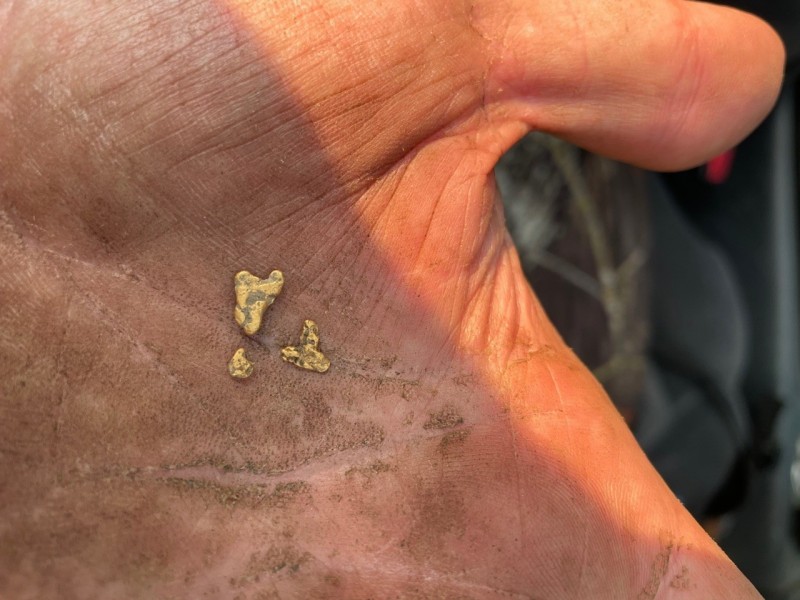
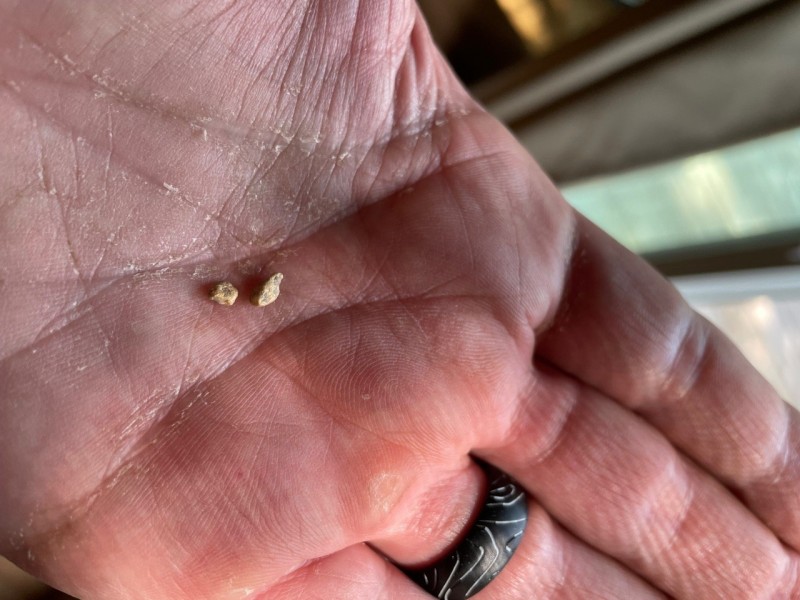
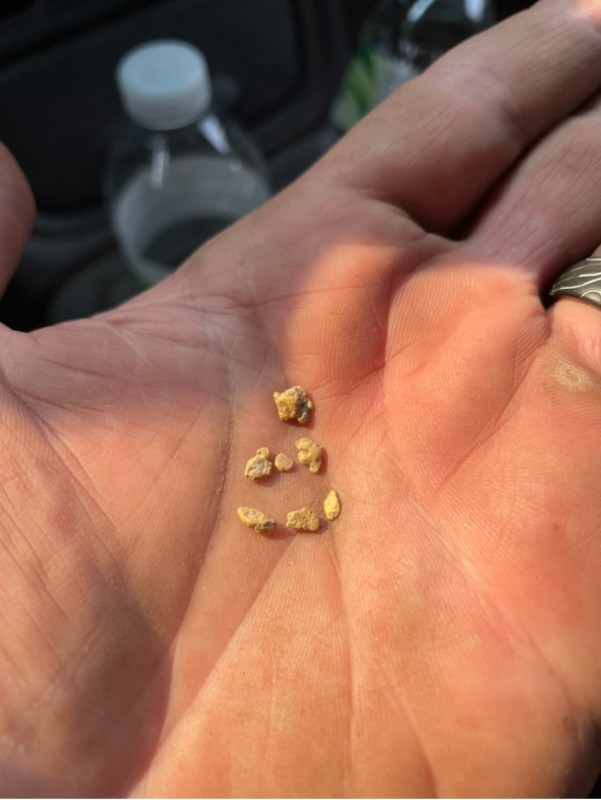
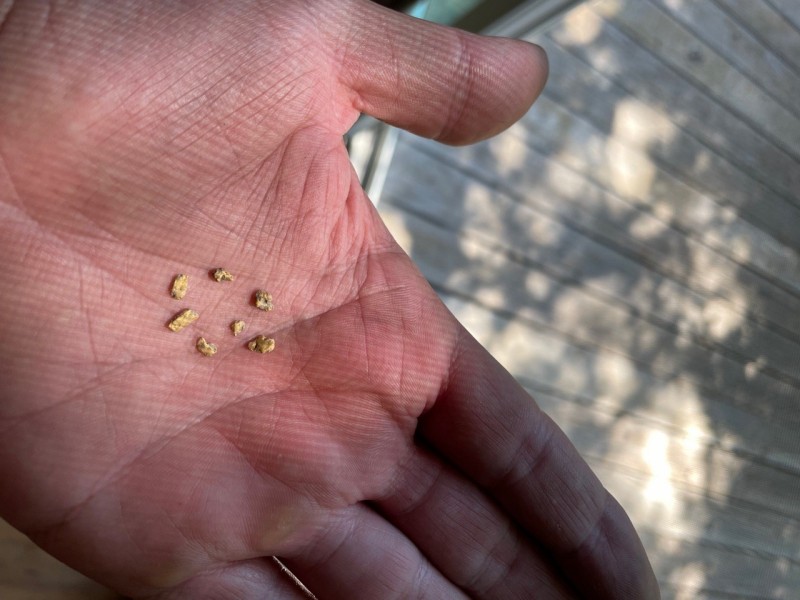
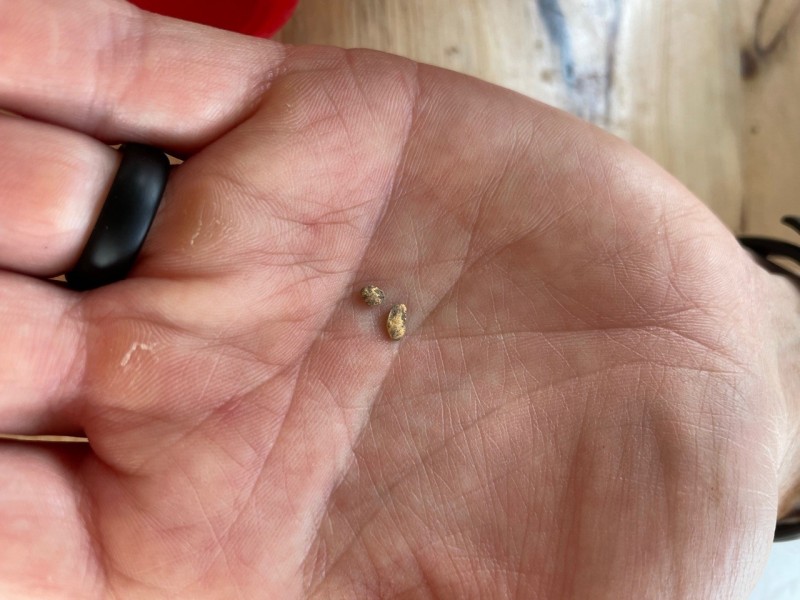

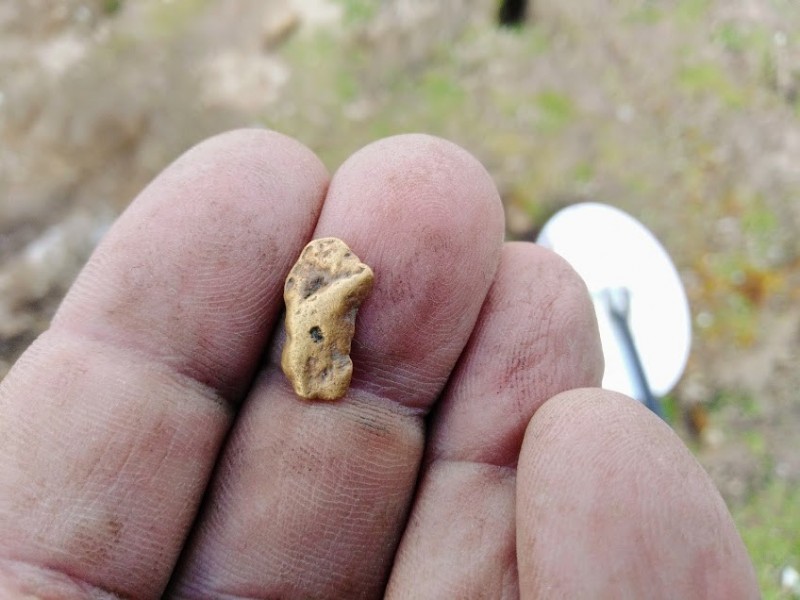
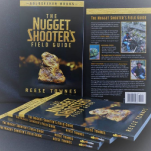


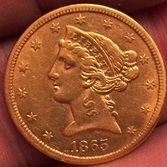
.thumb.jpg.4bb4c6c4da978cb5eac96e6390d8f36c.jpg)
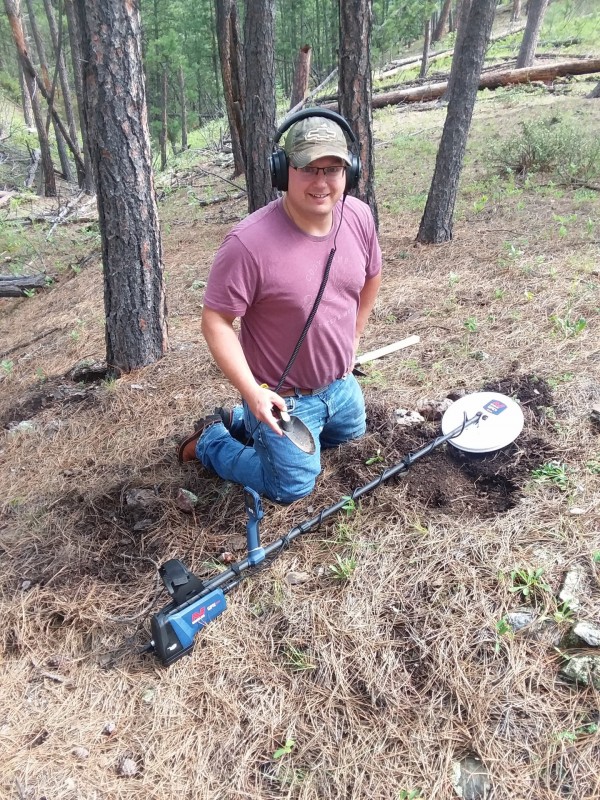
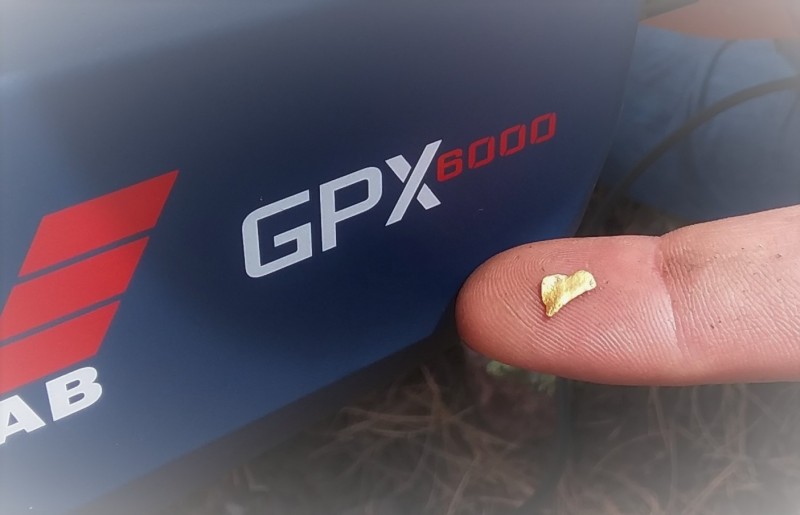
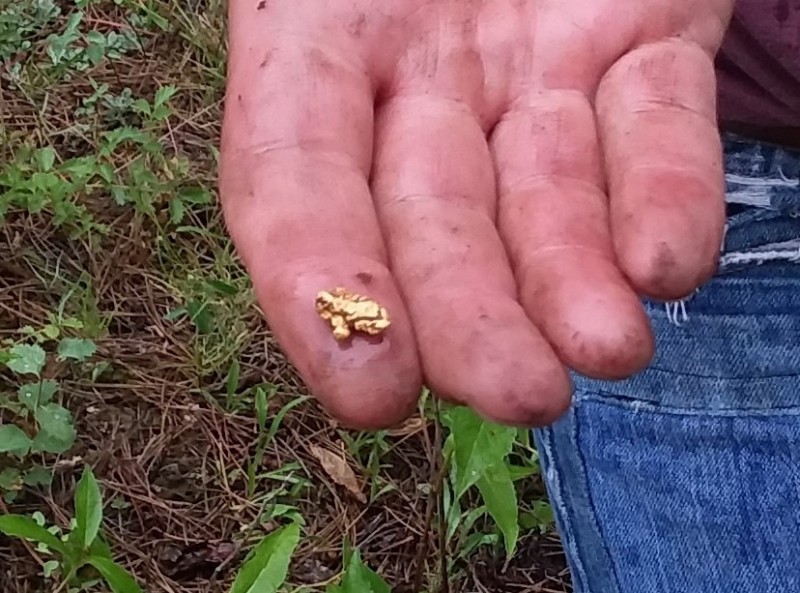
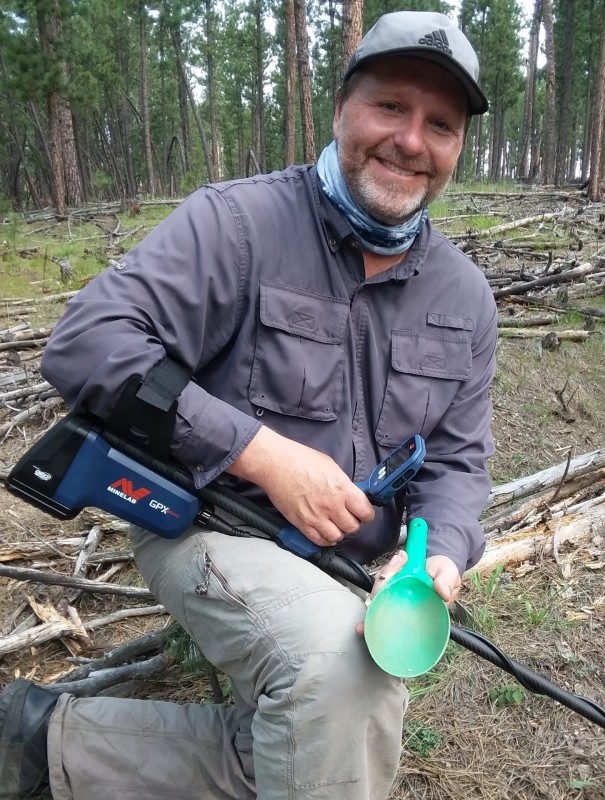
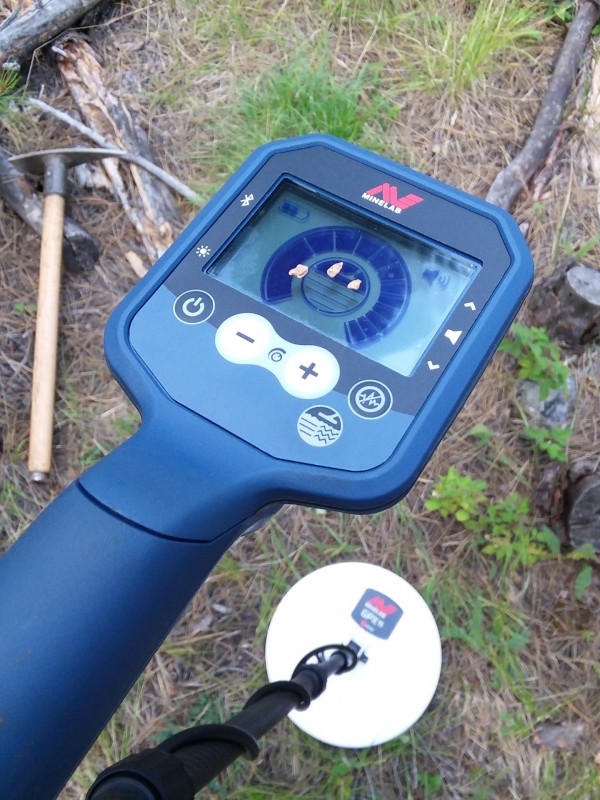
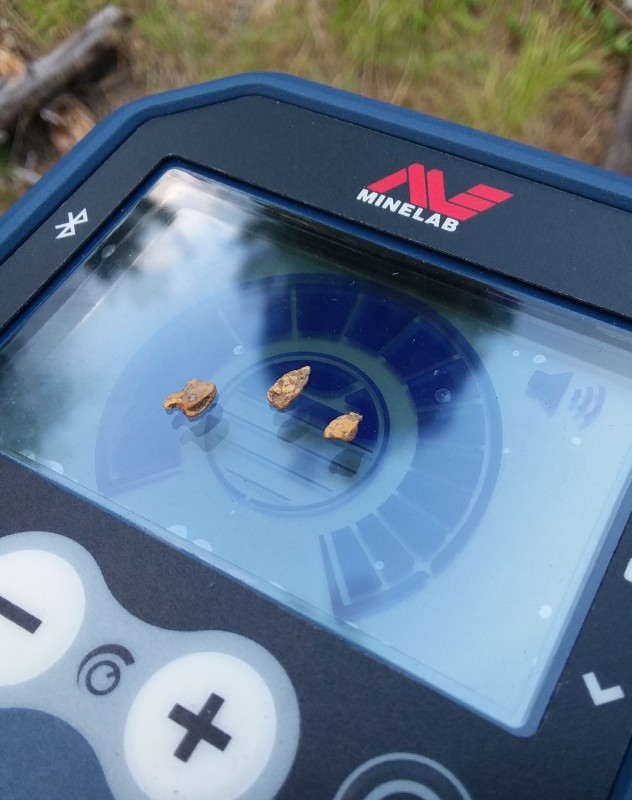
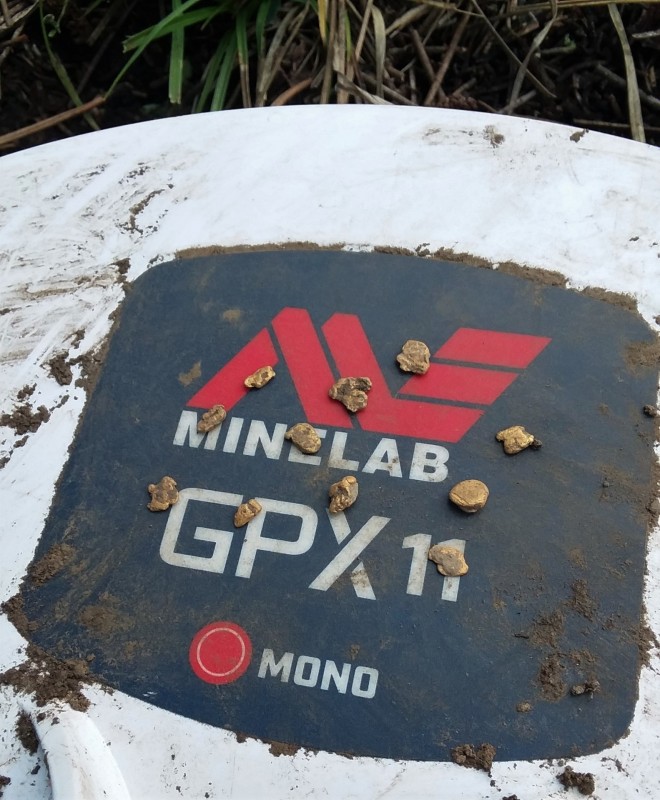





.thumb.jpg.95344db3aeef0a4c6c73420daa366191.jpg)
